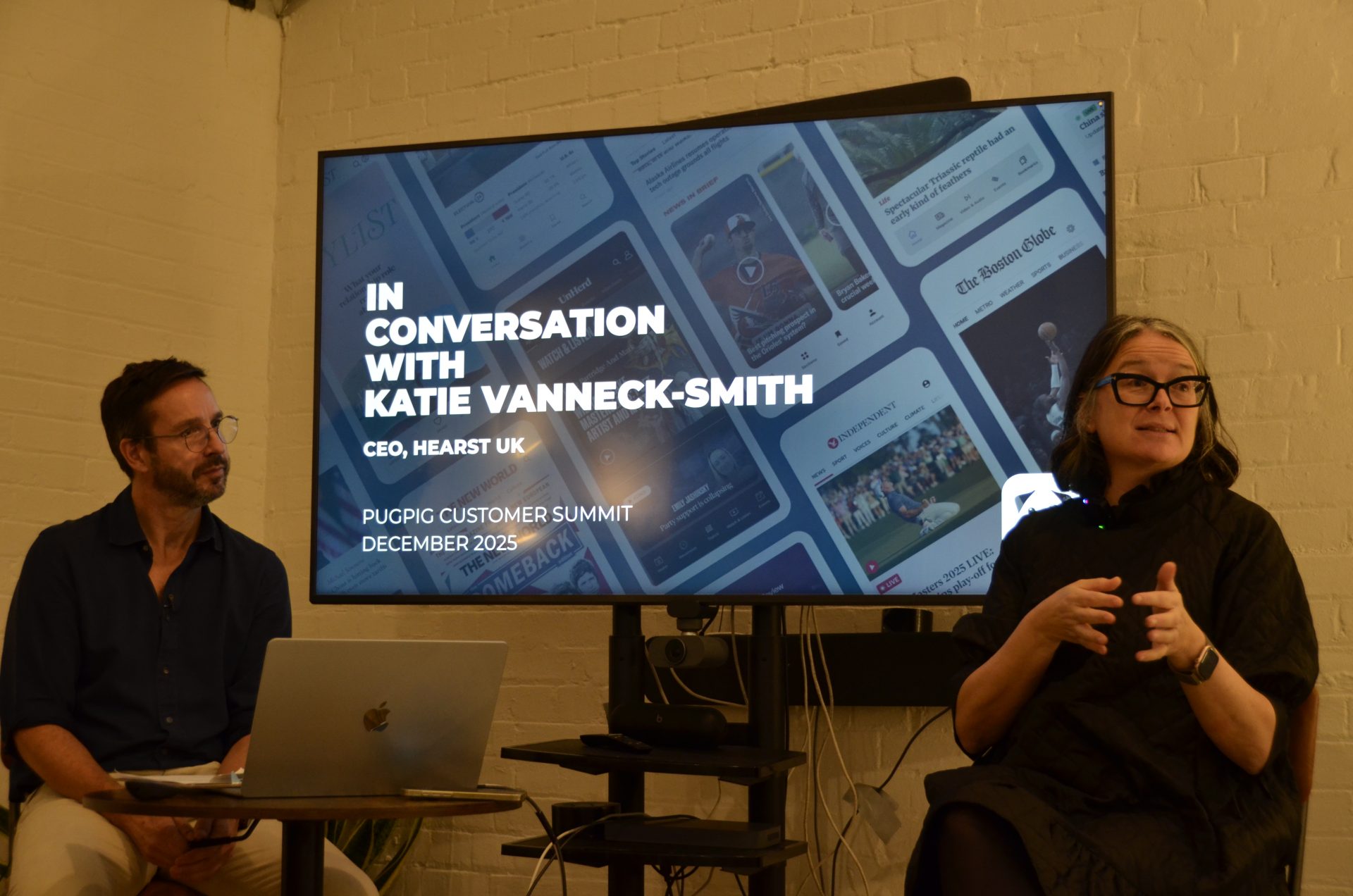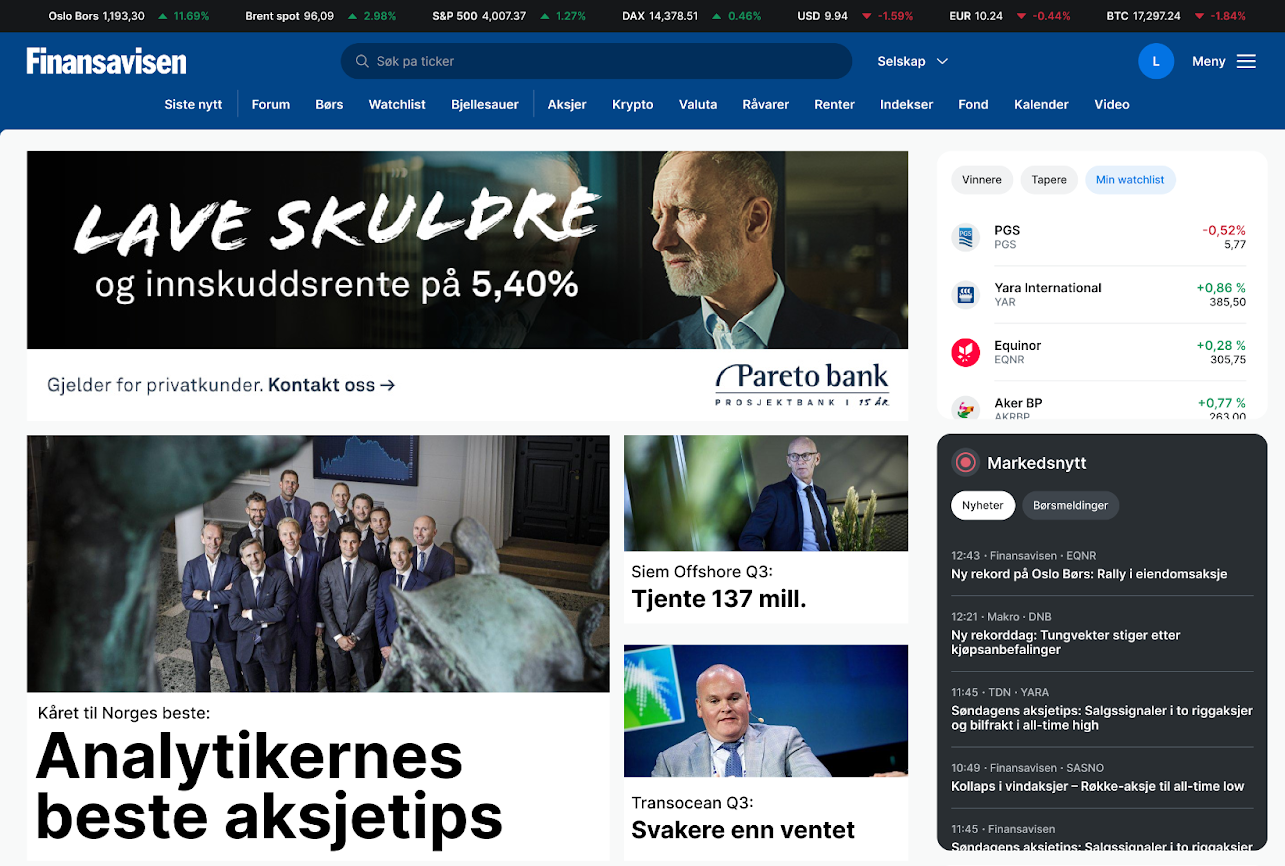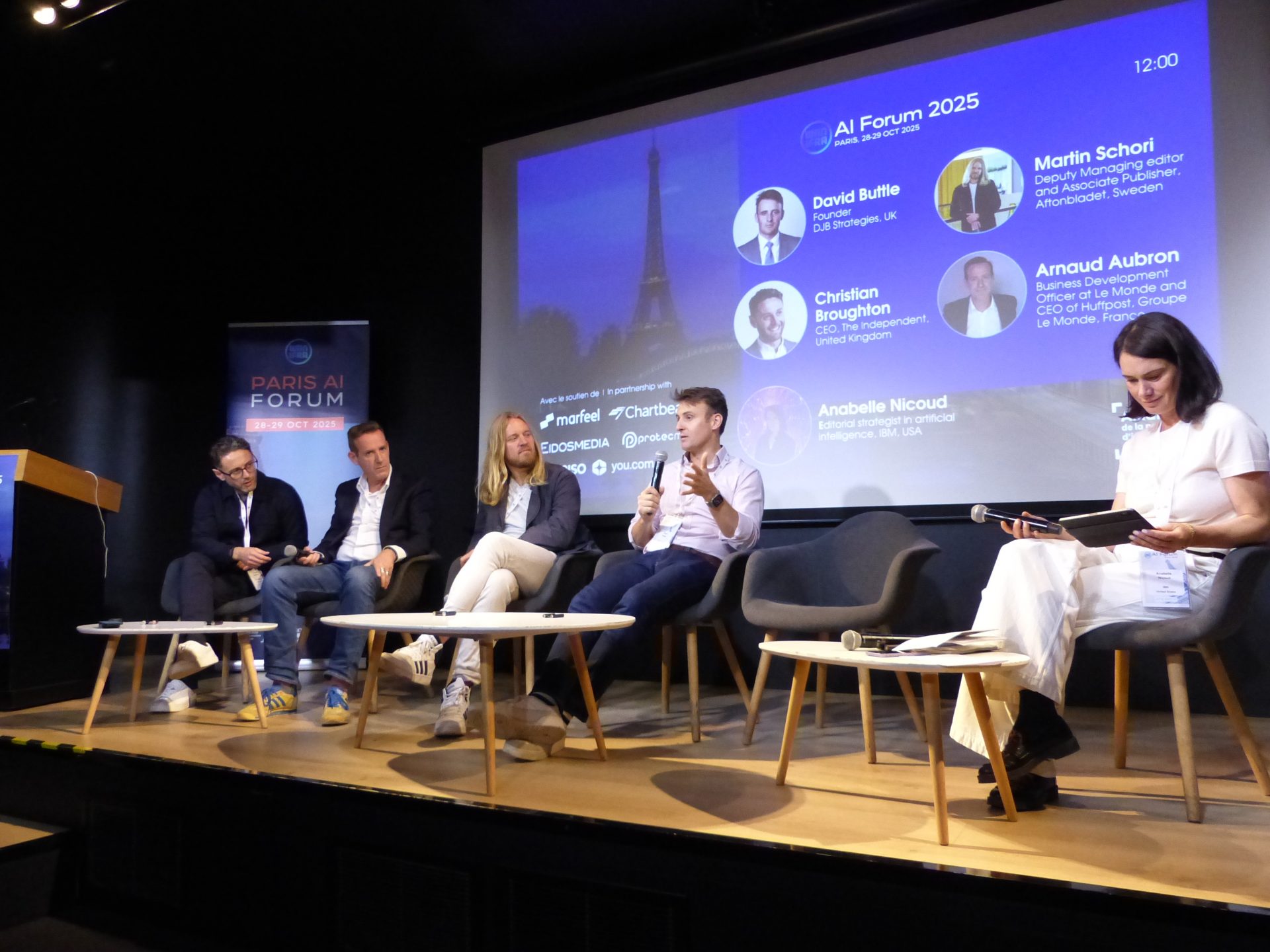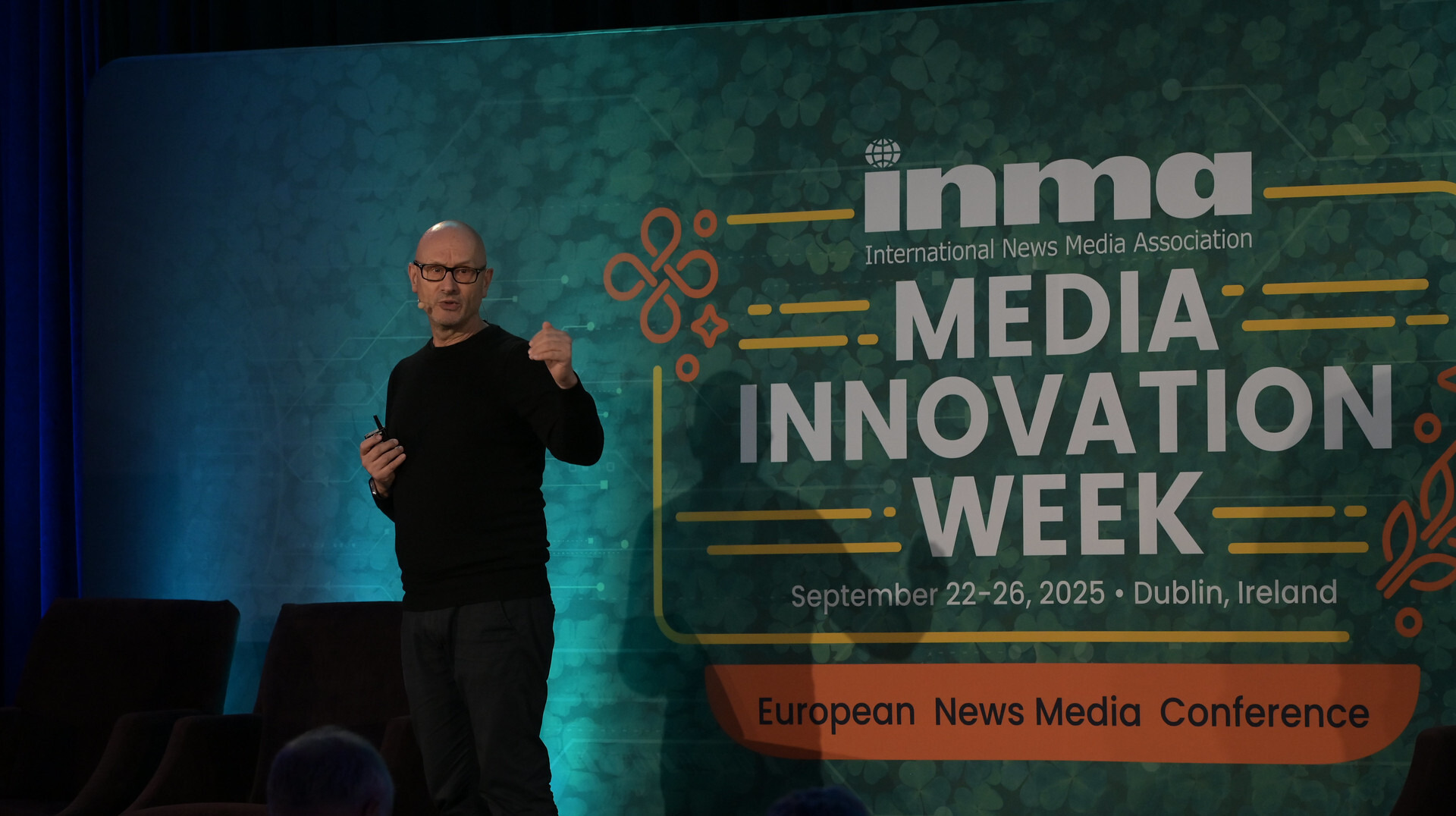
Newsletter
Newsletter
Publishers need to learn from missed opportunities with disruptors in the past to meet the challenges of AI, Stuff’s Sinead Boucher says.
4th August 2023

In the Pugpig weekly media bulletin, Pugpig’s consulting services director Kevin Anderson and digital growth consultant James Kember distill some of the best strategies and tactics that are driving growth in audiences, revenue and innovation at media businesses around the world.
If you would like to learn more about how Pugpig consulting could help you, or have any questions or feedback, please email us at info@pugpig.com.
By Kevin
In publishing circles, it is often said that the original sin was giving away content for free. I think that this dramatically oversimplifies the development of digital media, and I would offer up that we gave away advertising in much the same way that we gave away content in the early years of digital. Discuss. For many pioneers in digital media, we thought that there would be ample opportunities to build advertising-led businesses, but Google sprinted ahead by building a completely new way to advertise: serving up ads based on people’s interests as expressed by what they were searching for. Publishers were constantly playing catch-up with advertising innovations that came from outside the industry. And billions flowed out of US newspaper business with the rise of low-fi classifieds provider Craigslist and other options. Classified newspaper advertising peaked in the US in 2000 at $19.6 billion but had collapsed to only $4.6 billion by 2012, according to the Newspaper Association of America.
In a presentation at INMA’s Asia/Pacific News Media Summit, Sinead Boucher, chief executive at Stuff in New Zealand, looked at opportunities that publishers missed with social media, mobile and other disruptions in the past as a lens to issue a clarion call to fellow publishers not to make the same mistakes with the current disrupter – artificial intelligence.
Looking at these waves of disruption, a few major themes emerge:
In the face of these disruptions, Boucher said that the industry was complacent and slow to act. She added that the industry adapted its content and its business models in ways that benefited tech and social media platforms and not media businesses or their audiences.
We did things like throw all of our content into social platforms, shape the type of content that we produced, change the way that headlines were done and the type of images to suit how those platforms worked — not necessarily to suit what our businesses needed or what our audiences needed,
Sinead Boucher, chief executive Stuff
And lastly, she said that the the media industry was too slow to respond to attacks on it by bad faith actors on social platforms that have led to an erosion in trust in media and other institutions, which has resulted in damage to society and democracy.
The next wave of disruption is already upon us with artificial intelligence. The industry needs to learn from these missed opportunities and failure to identify threats from the past, she said. Industry and society are at risk from “degenerative AI” that could accelerate and enhance the production of disinformation, could amplify the negative effects of digital media on the mental health of young people and further polarise societies, she added.
Media companies need to make sure that they are fairly compensated by companies using their content to train AI models. She called on the industry to collaborate on these efforts in the marketplace and in legislatures to make sure the business and regulatory environment creates a level playing field. “We have to make sure really that it generates value for journalism because I do worry that this might be our last chance,” Boucher said.
However, just as in the past, these efforts cannot be purely defensive. Publishers need to look for ways that AI can create value for their audiences and therefore their businesses.
Our position is that there will be pressure, especially for struggling media businesses, to use AI to focus on driving efficiencies but without the proper focus on creating value for audiences and customers. AI can:
Yes, AI poses a new set of challenges to media leaders and publishers, and there needs to be a robust response to these challenges. However, it’s imperative not to get tunnel vision and miss the opportunities.
By James
Described as a trailblazer in editorial project management by journalism.co.uk, Robin Kwong created the FT’s Uber Game and The WSJ’s Six-Week Money Challenge. He now is the News Format Editor for the Wall Street Journal and is responsible for the Journal’s newsletter and data projects. Kwong has recently published a guide titled Project Management in Newsrooms in which he explains how journalists can become better project managers to drive and deliver innovation. In today’s bulletin, we’re going to explore his approach.
Why is editorial project management important?
For Kwong, newsroom project management is required when there is something that goes “beyond the normal course of reporting, writing, filming, editing, producing, etc”. He uses the example of a project involving “multimedia stores, or an interactive news app” to explain when it could be appropriate. Whilst these would generally be an editorially led effort, it would involve people from across the organisation and outside of the editorial team.
However, as Kwong points out, historically newsrooms haven’t tended to hire project managers. “Instead, they expected editors, audience engagement teams or other digital staff to take on project management responsibilities without providing them with the necessary training”, he says.
Whereas bigger media companies may already have well established project management functions there is still likely a divide between editorial and commercial which would hinder them from working efficiently. Moreover, for Kwong the need for better project management in newsrooms is getting stronger. As newsrooms are building projects within a new digital landscape they are trying lots of new things which fall outside of “business-as-usual”. Without solid project management, new initiatives are likely to fail or they won’t reach their full potential. Good ideas could end up not being delivered.
How does the guide approach project management?
The playbook is not intended for readers with an advanced knowledge in project management, it’s designed as a starting point for anyone “interested in practising project management in a newsroom environment to do so effectively”. It breaks project management into three stages of a project lifecycle: planning, execution and project wrap-up.
Stag 1: Planning
Kwong cautions against the “stereotypical journalist’s faith in ‘winging it’” and points out the importance of proper planning before commencing the project. The key pieces of advice are:
Stage 2: Project execution
The second stage of the project should start with a kick off meeting. The important elements of this phase are:
Stage 3: Project wrap-up
The final stage needs to account for the differences in project and product management. Once the activity reaches the product stage, it needs to be handed over. It’s also important to consider that:
Here are some of the most important headlines about the business of news and publishing as well as strategies and tactics in product management, analytics and audience engagement.

Newsletter

Newsletter

Newsletter

Newsletter

Newsletter